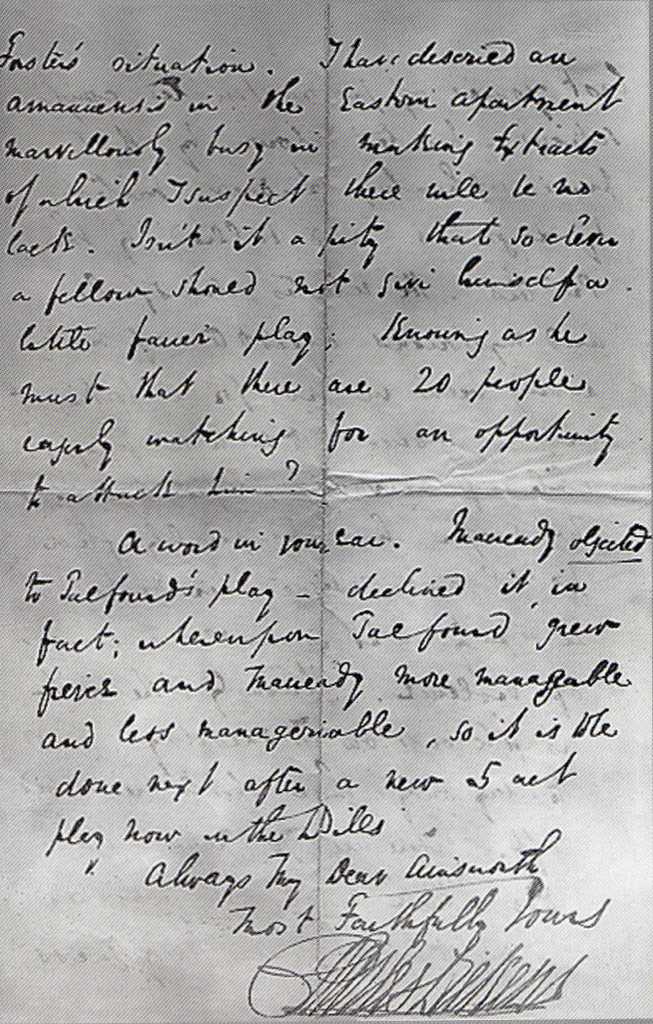 Charles Dickens – British Author (1812-1870)
Charles Dickens – British Author (1812-1870)
Emotionally scarred as a child when forced into a workhouse after his father was sent to debtor’s prison, Charles Dickens later used that awful experience in some of his most famous literary works, including David Copperfield (1850) and Great Expectations (1861). He began his writing career as a freelance reporter in 1829 and went on to write the Pickwick Papers (1837), which made him famous. Editor, journalist, and novelist, he produced an impressive body of work including numerous classics. Against doctor’s orders, Dickens continued to travel and do public readings until his death.
Charles Dickens Handwriting
Charles Dickens Personality overview according to the handwriting analysis report
Dickens’ handwriting has a wonderful, flowing rhythm within a speedy script, which indicates a mature integration of the various aspects of his life experiences. He was a man of grace and style, as well as sensitivity, as seen in the moderate variations of middle-zone size and in the well-developed upper zone. The literary d also appears in his script, a sign of a natural writer.
Charles Dickens Relationships
The moderate right slant reveals emotional response, but also emotional control. Add to that the wide spaces between words and the de-emphasized lower zone, yet strong degree of connectedness between letters, and we see a conflict. Dickens was someone who needed to feel connected with others, but who could not tolerate too much closeness. He would be an amusing companion so long as he was given space. Otherwise he would likely do something to create emotional distance, such as starting an argument, as seen in the downward-slanting f-crosses.
Charles Dickens Intellectual forces
The tall upper zone and creative connections into this zone indicate Dickens’ strong interest in mental
activity. He had a keen mind and could move rapidly from one idea to another. Using a combination of logic, as seen in the ability to connect several letters together, and intuition, found in the open, clear arrangement, he was able to lucidly express the many ideas that filled his head.
Charles Dickens Physical drives
The harmonious writing movement— with well-proportioned zones, strong left-to-right movement, and firm pressure—indicates good stamina and vitality. While the emphasis is on the intellect rather than the physical, material world, the warm, colorful ductus (writing line) suggests a sensuous individual with a deep capacity for romance and intimacy.
Charles Dickens Motivating forces
Dickens’ signature is large and illegible, a far cry from the text of the sample. This demonstrates a very different public character compared to his private persona, which is far more modest. The man he showed to the world was ultimately self-confident and proud. The simplicity of the text, however, tells us that, inside, he was comfortable with who he was and was more concerned with altruistic pursuits than self-aggrandizement.
Source: Handwriting of the Famous and Infamous by Sheila Lowe
